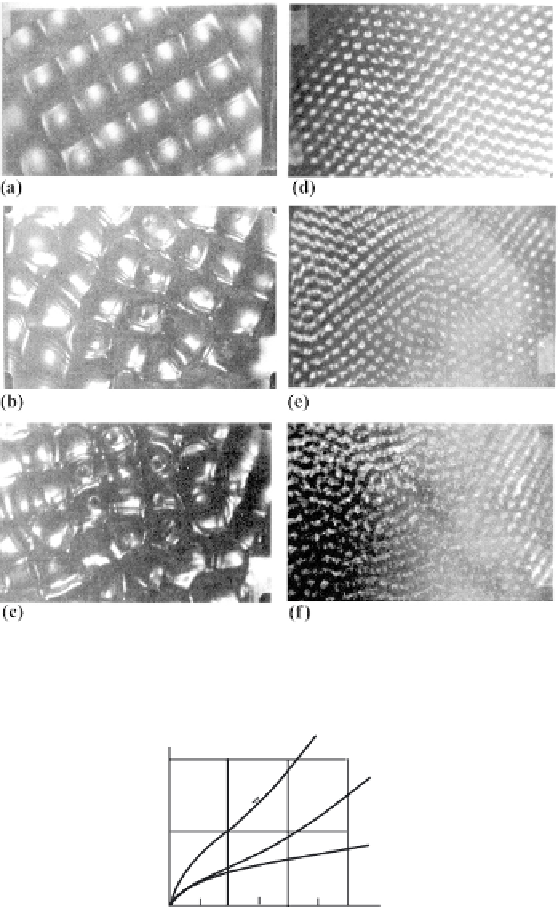Geoscience Reference
In-Depth Information
Fig. 7.16 Transition from structures to chaos for square wave cells at frequency variations from
100 s
−
1
(a) via 160 s
−
1
(b) to 180 s
−
1
(c) and for hexagonal cells at frequency variations from
180 s
−
1
(d) via 200 s
−
1
(e) and further up to 220 s
−
1
(f)
(1/s)
(1/cm)
Fig. 7.17 Comparison of theoretical dispersion laws for gravitational waves (1), gravitational-
capillary waves (2), and parametric waves (3) with measurement results for parameters of hexag-
onal wave cells (triangles) and square cells (circles). The respective axes represent wave numbers
(
k
) and frequencies (
ω
)
The most important feature of the dynamic behaviour of the system considered is
apparently the existence of a sole external parameter—the amplitude of the bottom
acceleration, which determines the character of this behaviour within a broad range













